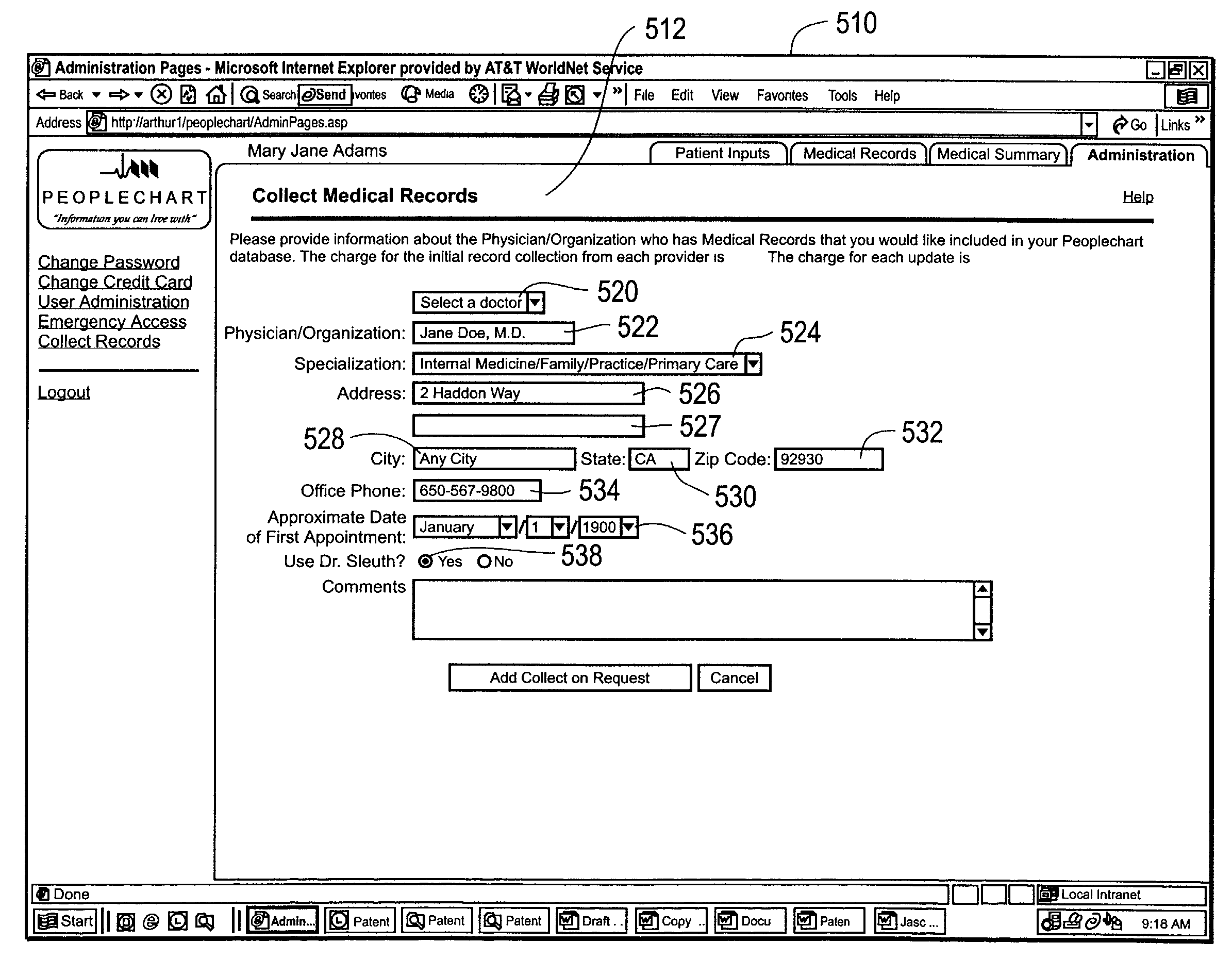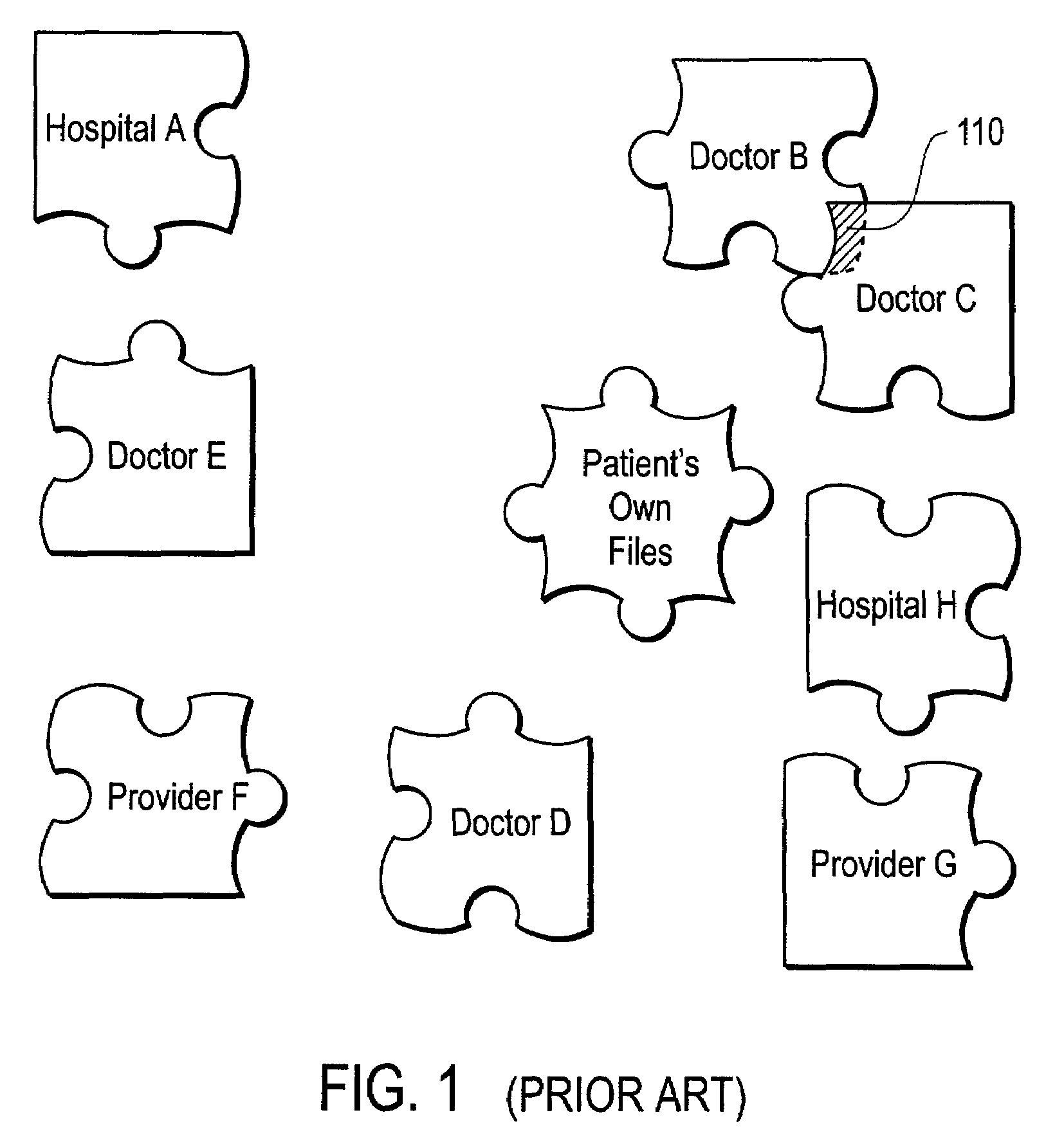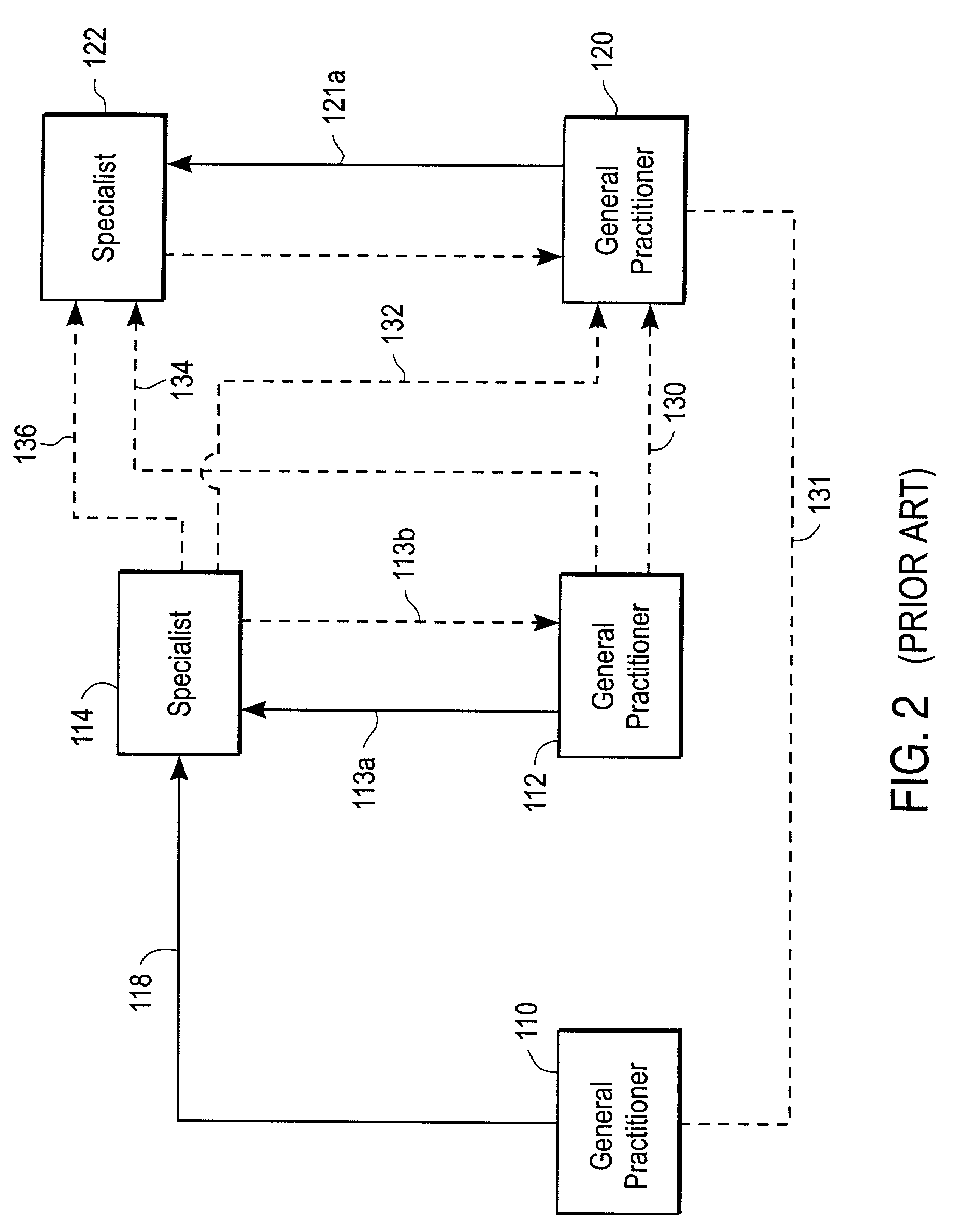Patient directed system and method for managing medical information
a patient-directed system and medical information technology, applied in the field of medical records management, can solve problems such as provoking misunderstandings or over-reactions of doctors, healthcare providers incurring overhead costs in maintaining and storing, and performing the transfer of medical records between healthcare providers
- Summary
- Abstract
- Description
- Claims
- Application Information
AI Technical Summary
Benefits of technology
Problems solved by technology
Method used
Image
Examples
Embodiment Construction
[0050]In the following description, numerous specific details are set forth to provide a more thorough description of the specific embodiments of the invention. It is apparent, however, to one skilled in the art, that the invention may be practiced without all the specific details given below. In other instances, well known features have not been described in detail so as not to obscure the invention.
[0051]FIG. 3 is a block diagram illustrating the hub and spoke flow of a patient's medical records between different healthcare providers medical record systems and the patient's central data depository of one embodiment of the present invention. The example of FIG. 3 uses the same healthcare providers as FIG. 2. The different healthcare provider medical records systems are shown in parentheses, as the records are actually transferred from one healthcare provider system to another healthcare provider system. The patient either has a central data repository himself that he directly contr...
PUM
 Login to View More
Login to View More Abstract
Description
Claims
Application Information
 Login to View More
Login to View More - R&D
- Intellectual Property
- Life Sciences
- Materials
- Tech Scout
- Unparalleled Data Quality
- Higher Quality Content
- 60% Fewer Hallucinations
Browse by: Latest US Patents, China's latest patents, Technical Efficacy Thesaurus, Application Domain, Technology Topic, Popular Technical Reports.
© 2025 PatSnap. All rights reserved.Legal|Privacy policy|Modern Slavery Act Transparency Statement|Sitemap|About US| Contact US: help@patsnap.com



